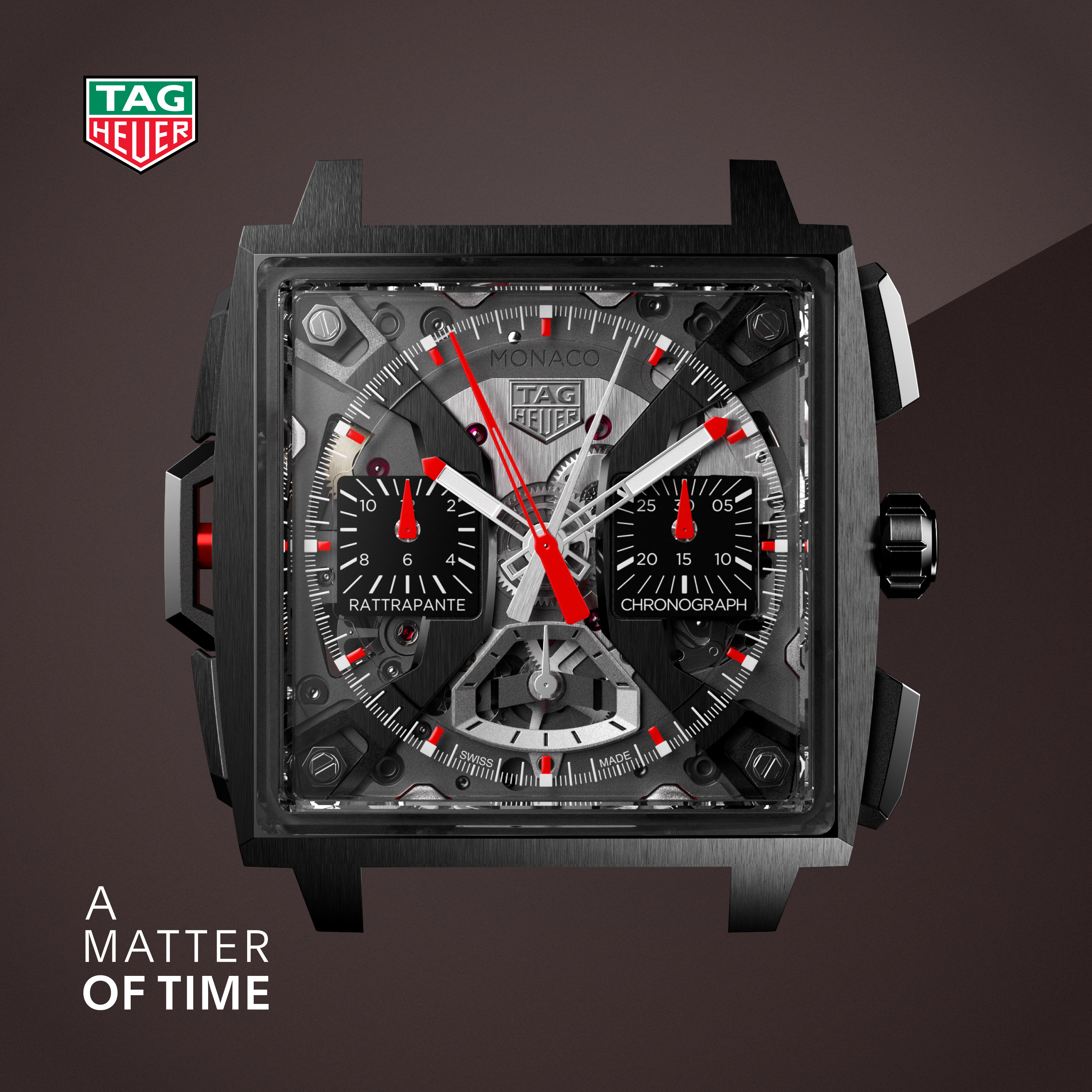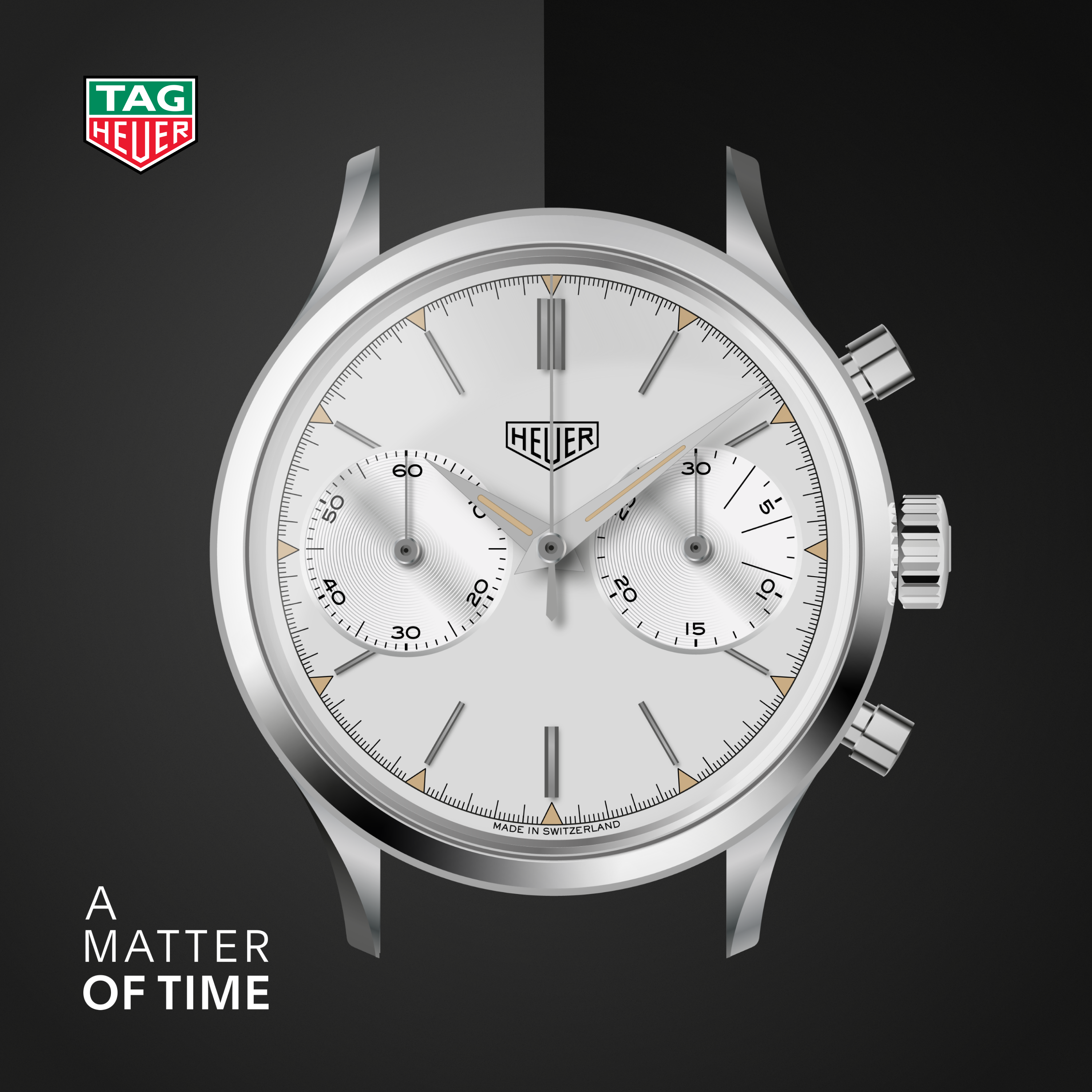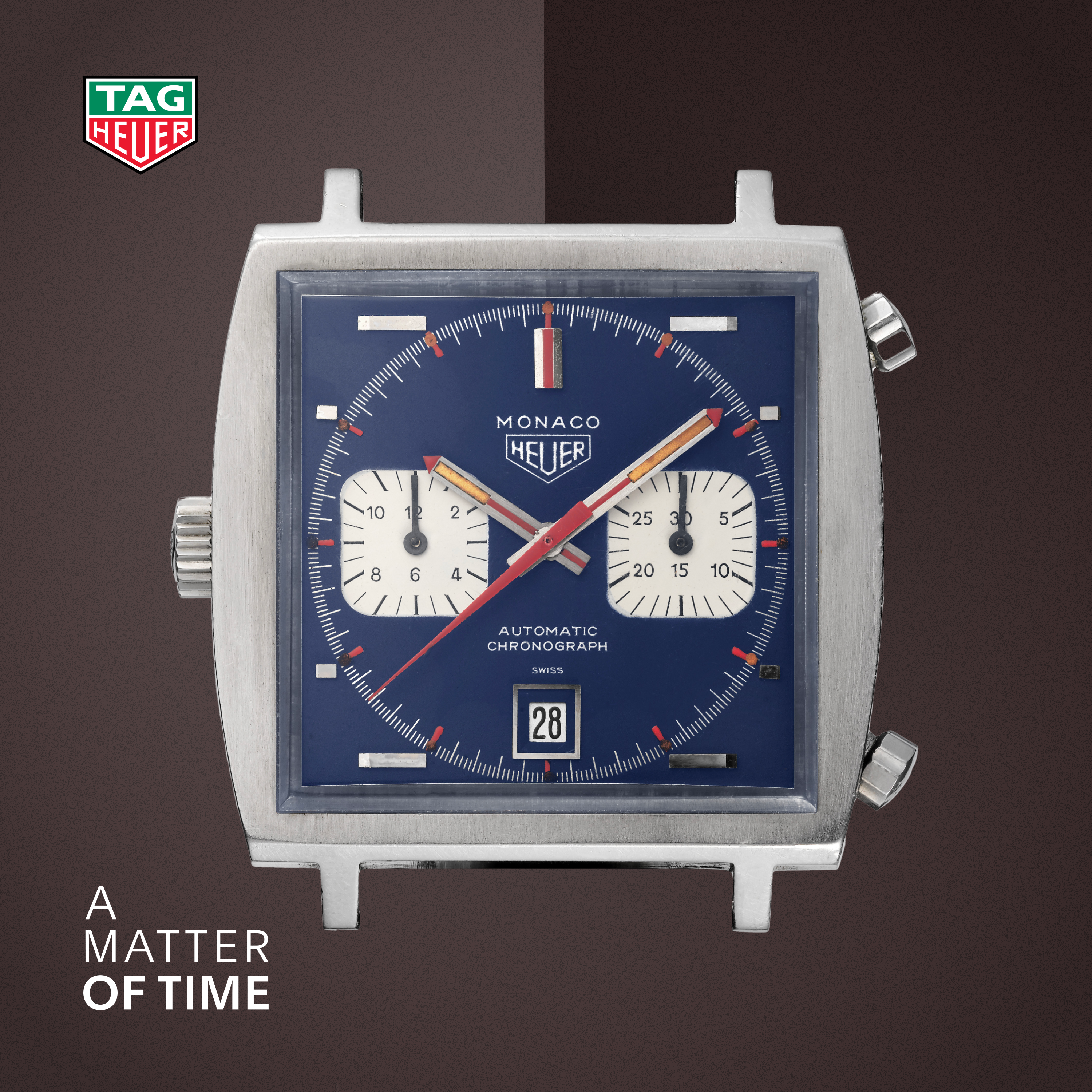Episode Transcript
[00:00:03] Welcome to A Matter of Time, a podcast by TAG Heuer. I'm your host, Nicholas Biebeck, heritage director at TAG Heuer and a lifelong enthusiast of Swiss watchmaking.
[00:00:13] In this season of A Matter of Time, we're looking at the TAG Heuer Formula one collection. And in our first episode, we looked at the environment that had caused the company to launch more accessible watches and the build up to 1986. 1986 was a hugely important year for the company and it represented the beginning of a new era, something of a big bang moment that would create a brand new organization, a brand new name that would really take it into the future and become the company that we know it as today.
[00:00:46] We've discussed in a few previous episodes on this podcast about the challenges that the company had faced throughout the 1970s, between the quartz crisis, the Nixon shock, inefficiencies in Swiss manufacturing. All of these factors had caused economic challenges for Heuer as a brand. And in 1982, sadly, Jack Heuer, the fourth generation of the family to run the organization, would lose control due to a betrayal by his chief financial officer at the time. And it would cause the company to fall into the hands of Piaget Group, who would then run the company for a number of years, until in 1985, due to a very fortuitous meeting between the Hooger family and the Piaget family, Technique d'avant Garde Group would take over the Heuer name.
[00:01:28] Technique Avant Garde Group was a fascinating organization, a true conglomerate as we know of it today. It had business interests in the aviation industry that it still holds today. Precision manufacturing, hospitality, but most interestingly, Motorsport. During the 1970s, they had been part of a sponsorship group that had had their names present on the Williams Formula One cars.
[00:01:53] Akramuja, the founder of the business, and his son Mansour had been able to support Saudia, a Saudi Arabian brand name, supporting the new endeavors for this country to not only get their name onto the side of the Williams car, but also got the livery changed to a green and white tone that was emblematic of the flag of the region.
[00:02:15] Alongside that, we would see the very characteristic tag letters on the airbox, the rear of the car with its very distinctive arrow G. And thanks to this interest in motorsport, eventually TAG Group, under the leadership of the Hoosiers, were looking to acquire a team. They would first approach Frank Williams, and being the proud person that he was and still seeing his opportunity to be competitive and independent, he politely declined their offer. But in 1982, the Akrams found a new opportunity in the grid. With the McLaren team having been founded by the New Zealander Bruce McLaren years before, they were now looking for a new ownership stake and a new level of leadership and investment for the team. The stars would align perfectly as the team had not been terribly competitive up to that point. But thanks to the arrival of TAG Group and through their relationships with Porsche, a new TAG Turbo engine was manufactured in fact by Porsche, with the development overseen by a gentleman by the name of Hans Metzger, to ensure a new level of competition for the team. And in fact, with Prost as a driver, they would see a number of world championships coming their way in the years to follow.
[00:03:25] All of this leads us up conveniently to 1986. In the year previously, the negotiations had been taking place between Piaget and TAG Group. And whilst there was initial degree of hesitation, a few things would take them across the line so that from 1 January 1986, a new organization, TAG Heuer SA, would come into existence. Of course, for a new brand you need a new flagship product and something that can represent the vision and direction for the organization going forward. It would appear that in fact, from around 1983, a new collection was in development under the leadership of the team at the time prior to TAG's acquisition. And we have to remember, Hoya as a brand was based in Bien. There was another new upstart organization finding its way in the world at exactly the same time, in exactly the same place. And that was SWOT.
[00:04:17] SWATCH had been founded in 1983 and come out of this new quartz technology where an opportunity could be seen that a less expensive Swiss watch could be presented to the world utilizing a plastic and these new quartz movements that were battery powered. And overcoming the challenges that had risen from Asia with these quartz watches, it was key that this brand would be seen as a success.
[00:04:42] The team saw an opportunity for a legacy Swiss watchmaking brand in the premium space to present something that was more accessible, more affordable and more contemporary. A few things helped this to be possible. It wasn't just the quartz movement, but more importantly, it was this new material that had arrived into the marketplace under the trade name Arnite. It was an engineered thermoplastic which had great resistance to corrosion and other things that plastics would normally be affected by, such as UV light. But most importantly, it could be colored with this. A design was commissioned by a gentleman by the name of Eddie Shuffler, who would create this distinctive case form and the color could be mixed between the case, the dial, the bezel and of course the strap. To create a huge array of different colors.
[00:05:27] So in 1986, with TAG taking over and a new era emerging, this new collection seemed to be the obvious place to start. And what name to choose for this. Of course, it had to be Formula One. This was the name that tied TAG Group to Heuer Heuer through its technical partnerships with the likes of Scuderia, Ferrari, tagged through their ownership of McLaren. And of course, from 1986, thanks to the relationship, the TAG Heuer logo would start to appear on the front cockpit screen of the McLaren cars, creating these defining images that represent this amazing era for Formula One. And in fact, thanks to our joint ownership, because between TAG Group for McLaren and TAG Heuer, the logo and the relationship with the team would exist for 30 years. In fact, at launch in 1986, there would in fact be 20 different individual references for the new Formula One collection from TAG Heuer. This would be a mixture of two different case sizes, 28 and 35 millimeters. But it would be the rainbow of colors that had simply not been seen before in the watchmaking industry. I always like to imagine what it must have been like to walk past your local watch retailer in this year. Up until that point, it had been a sea of monochromatic shades. Greys, whites, blacks, Nothing terribly exciting. All of a sudden, you would get to the TAG Heuer display case, you would have this amazing new green and red logo with these very bright colors.
[00:06:52] And to see this selection of watches, which was almost every shade of the rainbow that you can imagine. Yellow, pink, blue, red, green. The possibilities were absolutely endless. And in fact, during the course of production, from 1986 until 1996, when the last new SKUs were added to the catalogue, there will be 38 different individual references of the Formula One collection presented.
[00:07:17] It's amazing to consider the successes the TAG Heuer Formula One had during this initial run of the first series of pieces. We believe that more than 3 million of these watches were sold in the course of this period. And in fact, today you can still see people wearing the watches. And these very early pieces have become something of a cult collector's item.
[00:07:37] We've seen a gradual rising in prices over recent years. And of course, partly that has to do with relaunch that we presented in 2024 that we'll be speaking about in a later episode. But I think more it talks about the nostalgia that people feel for these pieces.
[00:07:54] For me, it's amazing to look back at the culture during this period and to understand exactly what was going on in the minds of Everyone at the time. When we look at the worlds of art, we can see the likes of Jean Michel Basquiat and Keith Haring. In the world of fashion, we see Jean Paul Gaultier and Asdine Alea. When it comes to cinema and tv, the likes of Miami Vice and Scarface presenting themselves on tv. Beyond that to music, we can imagine people with their Walkmans, listening to Michael Jackson and Madonna. It was clearly a moment for youthful empowerment and a new era for popular culture.
[00:08:27] I think when you were familiar with all of these references, you had a perspective on the world that was different from those of your parents and those who had gone before you. If you went looking for a watch at the time, you wouldn't have picked something that was staid and not so interesting, something that your parents had worn, but you would want something young and dynamic that truly represented you. And I think this really is what counts towards the success of the TAG Heuer Formula one collection during this initial launch period. It really encapsulated the Zeitgeist in a way that is amazing when we think about the fact that Switzerland is a small nation that's landlocked and isn't necessarily considered this great cultural hub. But somehow the designers and the managers at TAG Heuer at the time were able to distill all of this down and create a collection that truly resonated with popular culture at the time.
[00:09:15] I hope you've enjoyed this episode of A Matter of Time. As always, we'd love to hear your feedback and get your reviews. Do tune in for our next episode as we continue to explore the history of the TAG Heuer Formula one collection.


